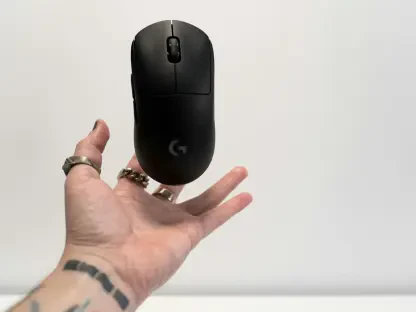Facial recognition technology is the new gold standard for the modern business world. Although these face-detecting systems have been around for decades, their use has expanded tremendously in a rather short period of time. So much, in fact, that they are now powerful enough to authorize payments, provide access into certain facilities, and even grant loans—without credit cards, IDs, or passwords; just a quick face-scanning process that serves as a verifier of one’s identity.
Worldwide, a growing percentage of businesses jump at the opportunity to use facial recognition in order to add an extra layer of security to their organization. Armed with this cutting-edge tool, the modern enterprise is looking to maximize the efficiency of its security staff, protect sensitive data, detect fraud, and prevent unauthorized entry. However, while facial recognition is being widely deployed as a mechanism for enhanced business protection, one question looms: Is this technology really that secure? Let’s find out.
Facial Recognition Is Shaping the Future of Business. Will It Also Replace Your Security Team?
Naturally, every enterprise wants to benefit from the proliferation of facial recognition technology; it’s fast, easy, convenient, and therefore caters to the needs of today’s busy business leader. Yet, just as quickly, this proactive attitude towards replacing traditional security measures with facial recognition tools could misfire.
In recent years, various advocates have argued that these robust software platforms are the future of security. And when your security devices are equipped with the latest innovative technology, there’s a chance that your business will be less sensitive to disruptions, right? It might be too early to assume this. At the moment, the several alarming shortcomings of facial recognition are growing in urgency. Typically, they mostly focus on:
1. Accuracy
With their software achieving an almost perfect accuracy rate, different providers claim that the new generation of facial recognition technology will exceed every expectation. The National Institute of Standards and Technology strengthens this argument in a recent study. In it, researchers document the performance of 127 algorithms from 45 developers and explain how face-detecting technology has made impressive gains in accuracy over the past few years. At this point, however, the technology’s accuracy continues to spark controversy. According to the American Civil Liberties Union (ACLU), Amazon’s facial recognition software, AmazonRekognition, incorrectly identified 28 lawmakers with people who have been arrested for a crime. What’s more, as ACLU highlights that “nearly 40 percent of Rekognition’s false matches in our test were of people of color,” new concerns about racial bias have also been raised. This particular issue rings true when it comes to emotion reading, as well. A study has found that facial recognition technology interprets emotions differently based on the person’s race—by comparison, the software has assigned more negative emotions to people with darker skin.
Similarly, Amara Majeed, a Brown University senior, has been mistakenly identified as a suspect in the 2019 Sri Lanka Easter bombings. The Sri Lankan police connected Amara to the terrorist attacks through a photo they found using facial recognition software. Meanwhile, facial recognition tools are being promoted as highly accurate solutions. But the truth is that today, when the technology is prone to both false positives and negatives, these tools might still be modest in this respect.
2. Data Misuse
Once facial recognition technology made it into the business setting, a heightened focus on data security has been identified among professionals. Used as a security measure, these systems will verify every person within the surveillance area based on a digital image stored in a specific database. This way, they aim to spot suspects through CCTV and trigger real-time alerts. While the platforms casually collect and store information about your facial patterns, you might be interested to know:
Who else could have access to your data?
Third-parties, such as software developers or various applications.
Is it possible for your facial signature to be sold and used without your permission?
Yes. Hackers aren’t waiting on the sidelines—they seize the opportunity to take control over sensitive business data and replicate faceprints in order to get past facial recognition systems with ease. If your data falls into the wrong hands, facial recognition could facilitate harassment, blackmail, and stalking.
Where is your faceprint information actually stored?
Locally, on a specific device, or in the cloud. For security purposes, companies prefer on-premises data storage to ensure that personal information will not be used outside of their private system. Arguably, encryption is the most efficient way to protect your data. While it might be the best option to keep the bad guys out today, when your data is stored in the cloud, third-parties also have wider access to it—whether you authorize it or not.
Can you wipe out your facial identification data if you want to do so?
Facial recognition systems allow you to opt out at any time. But will it completely delete all the mathematical representations of your face from every device? Software vendors claim that you can erase the content from your devices at will—securely and effortlessly. Even so, your data could still be used by third-parties—and therefore, potentially get stolen by a cybercriminal that wants to access your business credentials. As Alvaro Bedoya, facial recognition expert, explains, “You can delete cookies. You can change browsers (…) But you can’t delete your face.”
3. Anonymity
It’s Monday evening, you’re just leaving the office, and the facial recognition system used by your company is registering your presence before you’re out of the door—shortly after, it follows you into your everyday life. If not used ethically, the so-called security-protective facial recognition tool can also identify you in public places, track your location, and keep an up-to-date journal of your daily activities. Going a step further, it can even pass valuable information derived from a face-detecting operation to another institution—completely unrelated to your business activities. Therefore, this tool has a strong potential to limit your anonymity. Not only will your personal information be retained, but the technology could potentially also inform your business partners—or competitors—about your whereabouts outside working hours. You can wear a cap, scarf, and glasses; and facial recognition software is still able to see through your disguise. Just like that, you’re not a simple face in a crowd any longer.
Facial Recognition Technology Is Still a Work in Progress
It’s a given that facial recognition systems will continue to evolve and become more common. When all the roadblocks of these platforms will be addressed by future technological developments, tech-savvy companies might have the opportunity to strengthen their security posture. Should it replace your security team? No—the end of the human touch might never come, but its capabilities can be enhanced with the right tools.









